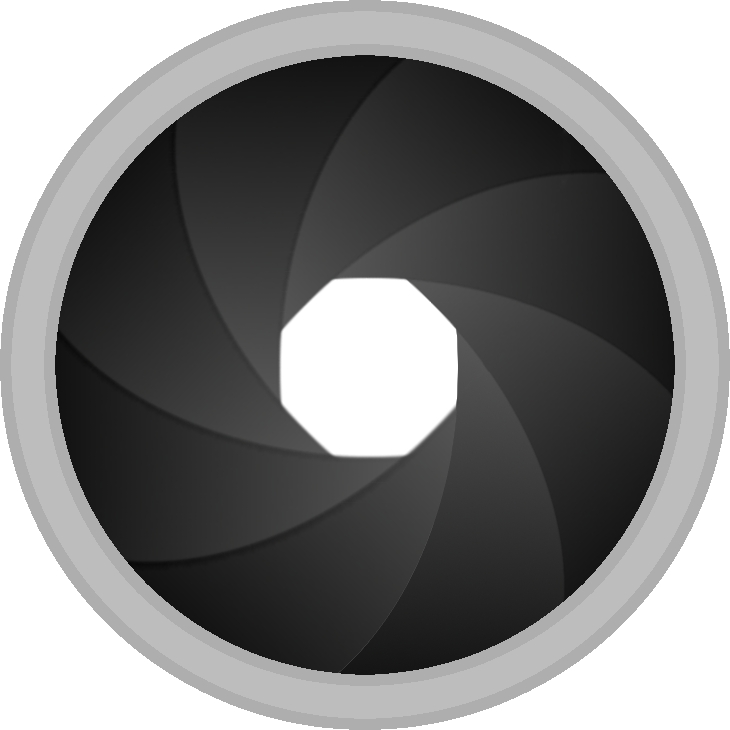

Each lens has its own relation, lens manufacturers and lens test sites provide data on how a specific lens behaves when varying the aperture. The relation between the aperture and the sharpness of the produced photos is considered a characteristic of a given lens. Again, the reverse is true: using a high f/stop means that less light is entering the lens and therefore the shutter will need to stay open a little longer which translates into a slower shutter speed. Using a low f/stop means more light is entering the lens and therefore the shutter doesn’t need to stay open as long to make a correct exposure which translates into a faster shutter speed.
#Big aperture vs small aperture iso
The three factors that affect the correct exposure of a certain scene are the shutter speed, f-stop, and ISO setting. A detailed discussion about controlling your depth of field is given in my post >. A Large aperture (remember it’s a smaller number) will decrease depth of field while the small aperture (larger numbers) will give you larger depth of field. This is a very shallow depth of field and the photo was taken with an aperture of f1.8.Īperture has a big impact on depth of field. For example, in the photo below, the pencils in the middle of the photo (a yellow and red one) are sharp, but the rest of the pencils are out of focus and blurred. For example, the landscape shot below has an aperture of f/16 and the result is that both the mountain in the background and the boat in the foreground remain in focus.Ī small (or shallow) depth of field means that only part of the image will be in focus and the rest will be fuzzy or out of focus. A large depth of field means that most of your images will be in focus whether it’s close to your camera or far away. The depth of field (DOF) is the amount of your shot that will be in focus.
#Big aperture vs small aperture full
So by stepping down one full stop will result in getting half the aperture area. The area of f/2.8 will be exactly half of f/2. Then calculate the area, the area of the aperture of a lens 50mm f/2.8 equals to 251mm2. So, the area of the aperture of a lens 50mm f/2 equals to 490 mm2.Īnother example, we are using a lens 50mm f/2.8, to find the width of the aperture you divide the 50 by the 2.8, giving you a diameter of 17.9mm, and a radius of 8.95mm. As you already know that the area of a circle with radius r:

For example, we are using a lens 50mm f/2, to find the width of the aperture you divide the 50 by the 2, giving you a diameter of 25mm, and a radius of 12.5mm. To understand how these numbers are defined, there is some simple mathematics involved.

Similarly, if sensitivity is kept the same, the difference in exposure between a shutter speed of 1/125 sec and 1/60 is the same as adjusting from f/8 to f/5.6 again it’s one stop brighter. If the shutter speed is kept the same, the difference in exposure between openings up the aperture from f/8 to f/5.6 is the same as pushing sensitivity up from ISO 100 to 200 the image will be one-stop brighter in both cases. It is important to know that the same scale system (doubling and halving effect) is used in shutter speed and ISO. Opening up the aperture by one whole stop doubles the amount of light passing through the diaphragm. The most important thing to know about these numbers is that, from each number to the next, the aperture decreases to half its size (full scale), and allowing 50% less light through the lens. The table below illustrates the different types of F-stop scales. The lower the number, the wider the aperture. The number denotes how wide the aperture is. The photo below shows a typical diaphragm with 9 blades.Īperture is measured using something called the f-stop scale. This aperture is regulated by a diaphragm made of overlapping blades that can be adjusted to vary the size of the opening through which light passes. The aperture is physically located inside the lens, as shown in the below diagram. Most photographic lenses have variable apertures in order to control the amount of light entering the lens. What is Aperture?Īperture is the size of the opening in the lens. In this post, I’ll take about aperture, and answer the question: What Is The Aperture In Photography?. Learning how and when to adjust these settings can help improve your photography. There are two ways to control the amount of light that enters the camera and exposes the photosensitive surface: aperture and shutter speed, and one way to control the sensitivity of that surface: ISO. Aperture plays an important part in the look and feel of your images, In order to control the exposure of your camera, you have three separate settings.


 0 kommentar(er)
0 kommentar(er)
